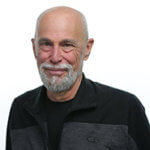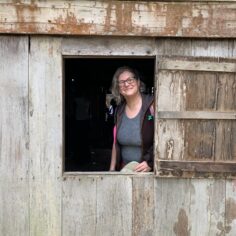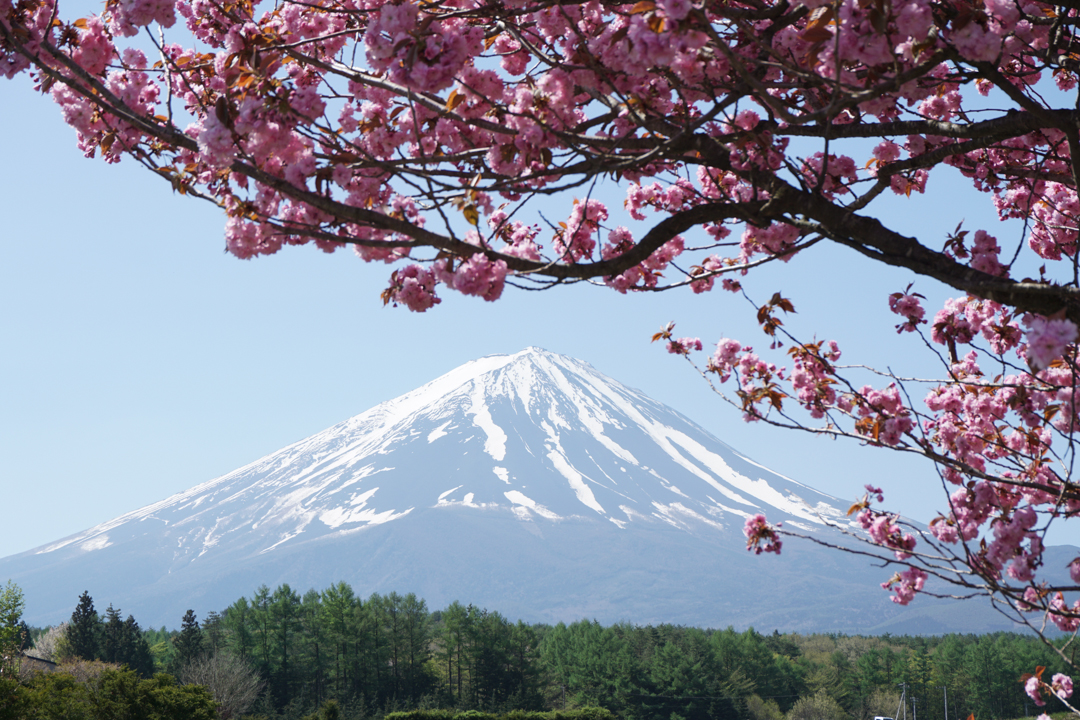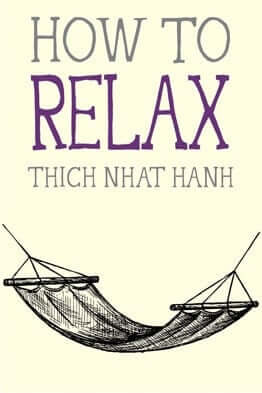
How to Relax
by Thich Nhat Hanh
Parallax Press, 2015
Paperback, 120 pages
Reviewed by Brother Gary Gach, Chan Minh Dai, True Platform of Light
Have you ever wanted to give someone a book by Thay but hesitated? So many choices. Well, good news: now there are five new ones to choose from, part of an immensely popular Mindfulness Essentials Series from Parallax Press.

How to Relax
by Thich Nhat Hanh
Parallax Press, 2015
Paperback, 120 pages
Reviewed by Brother Gary Gach, Chan Minh Dai, True Platform of Light
Have you ever wanted to give someone a book by Thay but hesitated? So many choices. Well, good news: now there are five new ones to choose from, part of an immensely popular Mindfulness Essentials Series from Parallax Press.
Following How to Sit, How to Walk, How to Eat, and How to Love, here’s a vital capper. It’s a good companion for practicing the Dharma doors in those four, and a good practice in and of itself: How to Relax. The Mindfulness Essentials books are an entry-level package of solid wisdom. They treat familiar things in everyday life—what we often do without thinking—rather than practices to which we aspire, say, forgiving or beginning anew. Each title covers a range of themes, making it an ideal checklist for those who are already on the path and who wish for a compass as to where to focus next.
How to Relax ranges across such topics as busyness, calm, conscious breathing, mindfulness, rest, stopping, looking deeply, everyday life, joy, autonomy, community, interbeing, healing, and letting go. The Plum Village tradition is nothing if not practical—putting understanding into action. How to Relax concludes with good news you can use: bell meditation, the “In, Out, Deep, Slow” gatha (summarizing The Sutra on the Full Awareness of Breathing), the body scan, computer and phone meditations, and (naturally) deep relaxation.
Mindfulness Essentials are slow books. Zen books. Each page is complete: a slice of consciousness manifesting the whole cosmos. The series itself is an expression of the Parallax publishing Sangha working together as cells in one organism. As a collaborative work of art, the series makes available numerous sumi-e ink drawings of Jason DeAntonis, a bit reminiscent of Mayumi Oda’s immortal contribution to Being Peace.
Jason’s cover art reminds me how during his lifetime, devotees of the Buddha would follow his instruction not to turn the practice into idolatry. They would paint a picture of his footprints or the chair where he sat. On this book, we see an empty hammock, which so reminds me of Thay. If the Dalai Lama shares the Pope’s honorific—His Holiness—I don’t think it would be discourteous to consider Thay as His Laziness. Indeed, in idleness is the preservation of our finest instincts. They don’t deserve to be thwarted by a desperate quest for fortune, fame, or inner war. How to Relax shows us the Way.
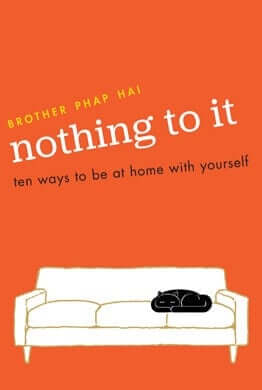
Nothing To It
Ten Ways to Be at Home with Yourself
by Brother Phap Hai
Parallax Press, 2015
Soft cover, 288 pages
Reviewed by Karen Hilsberg
If I were stranded on a desert island and could bring only one book, this would be it. Nothing to It is a treasure trove of insights, teachings, questions for reflection, suggested practices, recommended readings, and personal stories from Brother Phap Hai’s rich experiences practicing as a monk with our teacher, Thich Nhat Hanh, in the Plum Village tradition for the past twenty years.
This book is deeply engaging, well written, and useful to my mindfulness practice. It reminds me that practicing mindfulness can relieve suffering for myself and others. Have you ever listened to your favorite piece of music more than a hundred times? This book is like an album called “The Greatest Hits of the Buddha.” It covers the best of Thay’s and the Buddha’s teachings in a masterful, creative, clear, and comprehensive style.
Brother Phap Hai’s humorous, fresh voice conveys timeless Buddhist wisdom in ways appropriate to the 21st century and young practitioners. Though many of the practices sound deceptively simple (like paying attention to the breath), he provides clear instruction on how to integrate these life-changing activities into everyday life.
One of my favorite passages is “Suggested Practice, Gratitude”: That which we pay attention to grows stronger. Take a few minutes throughout your day to bring your awareness to “conditions of happiness” that present themselves to you. They might be very simple things indeed—good eyesight, warm clothes, or a nice cup of tea.
Do you enjoy your practice? One day when I was still a young novice, I was sitting on the edge of the wooden deck of Thay’s hut with my legs hanging over the side. Thay was lying behind me in his hammock, and together we were looking over the grapevines in the distance. After a few minutes, Thay said, “Brother Phap Hai, if you’re going to sit there, make sure that you swing your legs.”
Of course, Thay was not only talking about me sitting on the deck, but he was offering me a teaching about my way of relating to my meditation practice. In my early years of practice, I tended toward being too stiff, too formal, and in that process, there was not much enjoyment and delight.
Brother Phap Hai speaks with a beautiful combination of wisdom and humility. His book is a delight from cover to cover because it overflows with insights gleaned from his mindfulness practices and generous guidance on how to effectively implement these practices leading to concentration and insight.
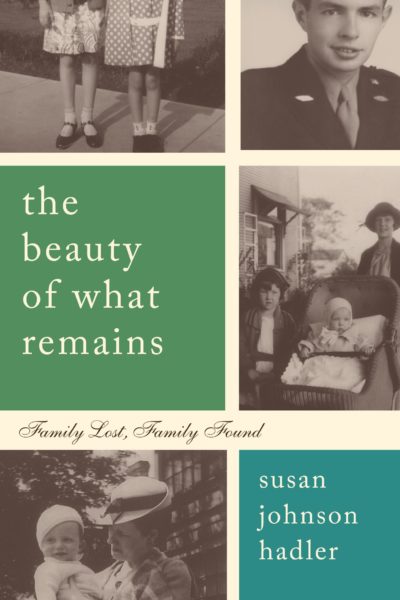
The Beauty of What Remains
Family Lost, Family Found
by Susan Johnson Hadler
She Writes Press, 2015
Softcover: 227 pages
Reviewed by Barbara Casey
“If you look deeply into the palm of your hand, you will see your parents and all generations of your ancestors. All of them are alive in this moment. Each is present in your body. You are the continuation of each of these people. In turn, your children will be a continuation of you.”
– Thich Nhat Hanh
Our teacher reminds us that we are not separate from our ancestors; we inherit their talents and their flaws, their joy and their suffering. That is why, when a piece of our family history is missing, a part of us is missing and we can feel it. And because family secrets usually hide stories of suffering, it takes great courage to do the work of unearthing what is hidden, of making whole what has been denied, often for generations.
This is the journey Susan Hadler takes us on. We follow the question that has been niggling at her for most of her life: Who was her father, a man who died at the end of World War II, just three months after she was born? In the process, Susan discovers much that she hadn’t bargained for, including finding a mentally ill aunt who had been neglected by the family for over fifty years. She experiences the delight of meeting new family members, while alienating some who worked hard to keep these stories untold for decades.
Susan’s prose is clear and unadorned, which makes it easy to follow her through the ups and downs of this reclamation. As Susan weaves in how her Buddhist practice helped her on this rocky road of discovery, the reader learns of the persistence, determination, patience, and kindness it takes to do this deep work. We also feel her growing empathy for those who couldn’t face the pain and so hid the stories.
We can use Susan’s journey as a model for how to stay honest and authentic while we uncover the wounds and hidden places in our own family histories and in ourselves. We can take heart from Susan’s story as we try to stay clear-eyed, traveling through our own past. We know this is crucial work; when we heal our wounds and those of our families, we help to heal our children and future generations. If you need a nudge of inspiration or a guide to help you on your way, this book may be just the ticket.
